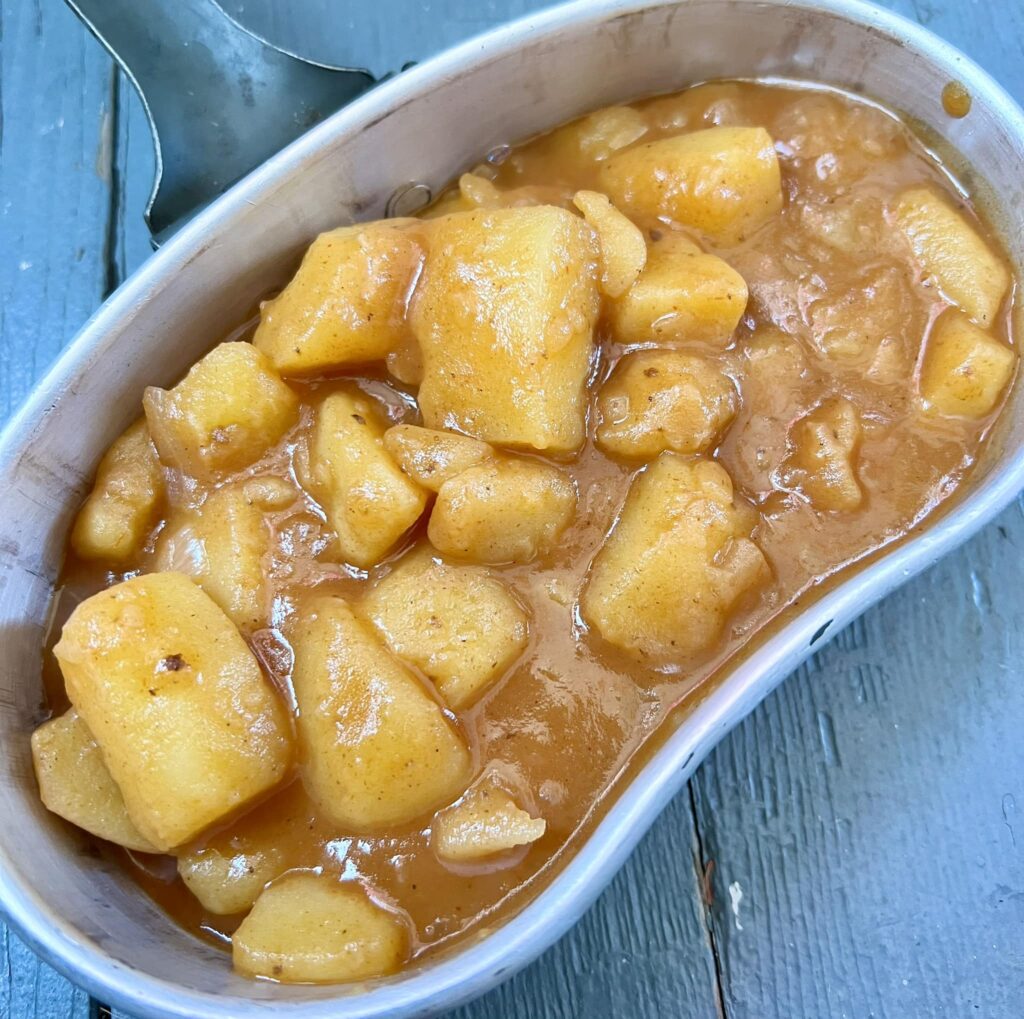
In wartime Germany, rationing and availability of ingredients required people to change and adapt. It may not have been possible for soldiers or civilians to eat meat every day. In 1942, a new cookbook for vegetarian and low-meat field kitchen dishes was released. The recipes in this field kitchen cookbook were ones that were already in practical use. It was noted that it is easy to make delicious meals with abundant meat, even simply prepared, because the hearty meat juices or drippings form a basis for rich flavor. For meals with vegetarian ingredients, field kitchen cooks were advised to carefully and correctly handle the ingredients before and during preparation, to make proper use of available seasonings and herbs (especially herbs that could be grown in Germany), and to make good, tasty sauces.
The first recipe in the book is one that uses the tasty sauce strategy. It’s for potato Gulasch. Roasting flour, butter and onions together with some tomato paste in the bottom of the pan and then deglazing it with broth creates a richly flavorful coating for the potatoes. The quantity in the recipe is for one person but the book notes that this may be enough for two and indeed, I prepared the one person quantity and got three meals out of it.
Here is the original recipe from “Fleischlose und Fleischarme Feldküchengerichte” by Richard Schielicke, 1942.
“Potato Gulasch
Up to 1000 g potatoes
10 g fat
2 g dehydrated onions
10 g tomato paste or Condimento
10 g flour
0.5 l bone broth or water with seasoning
Season with salt, vinegar, paprika
Lightly brown the flour in the fat, add the onions and roast them together with a very small part of the tomato paste. Add the broth, stir until smooth and boil thoroughly. Peel the potatoes, dice them and slowly cook them in the sauce until done. Season with vinegar, some paprika if available, and the rest of the tomato paste.”